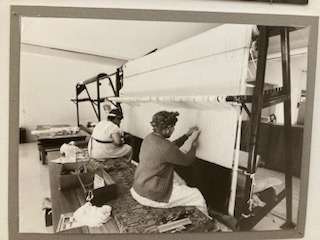
France's Finest Carpets
A Visit to the Savonnerie in Lodève
TRAVEL THROUGH FRANCE
Joan
12/10/20235 min read
I confess that I have an aversion to crowds, famous tourist destinations, and above all guided tours. It is pure vanity. While I live on an overcrowded planet, I prefer to think that I don't . And so, wherever possible I seek out a quiet place to live , and avoid busy cities. I know, I am privileged to be able to do so. "But then some tourist locations are so special," you may say, "don't you feel that you may be missing out?" Well yes, that may well be. And of course I was lucky enough to visit some famous destinations before they became overrun by tourists. But nowadays I am happy to shun big locations in favour of the smaller picture. What's more I do my bit to reduce carbon emissions. I reckon the view from the top of our valley is as beautiful as any in the world.


But then there are some destinations that I regret never having seen. One of these is the Taj Mahal. After he retired, my brother decided to visit India, the country of our grandfather's birth. By pre-booking internal train journeys he was able to visit non tourist destinations , and make local friends along the way. But one destination he could not possibly avoid was The Taj Mahal. He arrived at dawn, which was an amazing experience in itself. And then, when entry was permitted, he was ahead of the crowds. Now that, in my mind, is the way to do it.
On Friday we visited The Savonnerie in Lodève, which I talked about in my last blog. Opened in 1990 it is a large imposing building on a hill overlooking the town. I was immediately struck by its unusual curved glass roof. But on entering I soon understood why it was so designed. The main workshop on the first floor is flooded with light which enters from the glass roof and enormous windows on both sides. There are twelve weavers in all who sit with their backs to the light . This illuminates the loom in front of them. Good light is essential for their painstaking work.


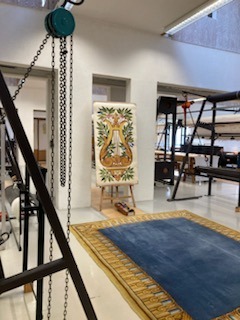

I was really looking forward to learning about the intricacies of their craft. Sadly that was to prove difficult. We not only found that we were to be shepherded in a large group, but that the commentary , albeit very informative, was to be delivered in very fast French. Whilst I feel that my French is usually good enough to get by, I was totally lost in these circumstances. Fortunately I was able to glean enough knowledge at a gentler pace by looking around me, and reading the notices posted alongside some of the exhibits. I am afraid that on this occasion, I came bottom of the class, and on one occasion was even reprimanded for straying too far from the group. No! Guided tours are not my schtick.
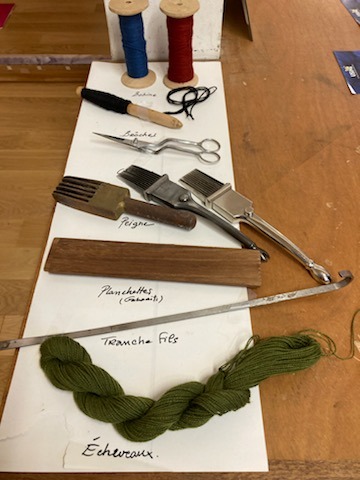

The Tools of the trade...
Bobbins; broche(or shuttle); ciseaux (sharp pointed, sometimes curved scissors); peignes (combs); planchettes(wooden flattening boards); tranche fils( to slice the yarn) , and écheveaux(skeins of wool.).
The Savonnerie is still well worth a visit. It is one of only two such carpet manufacturers in France, and is known as La Savonnerie because the original factory was set up in a soap maker's works in Paris to make Royal carpets for the reign of Louis X1V . Today we saw both traditional and modern styles being woven. The traditional carpets can take 10 years to create, and of course all are made of pure wool.
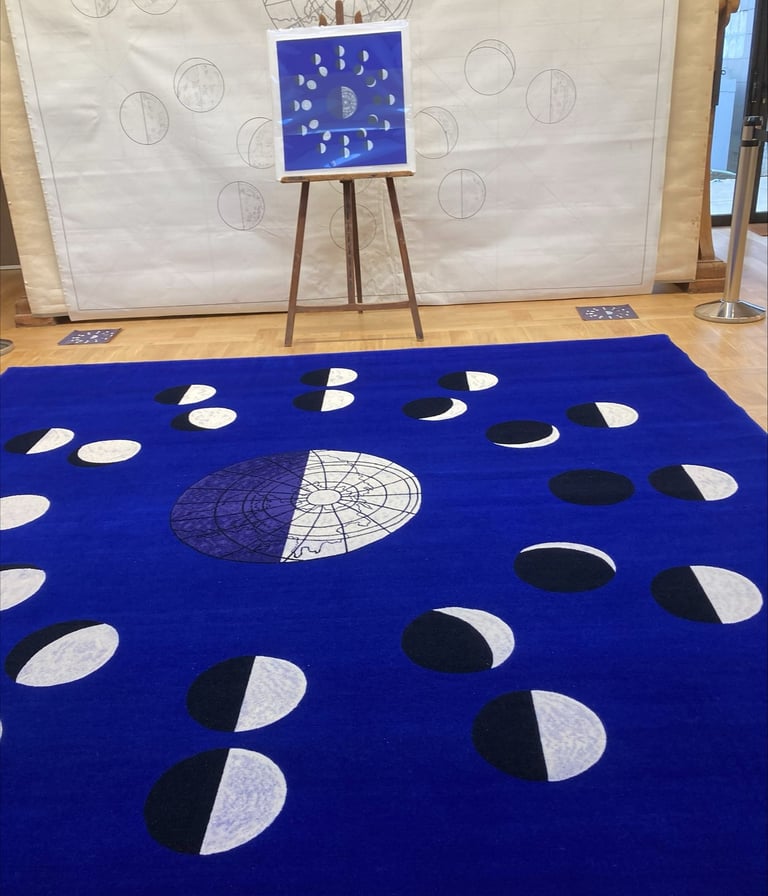

We watched in awe as two women, sitting alongside each other, painstakingly inserted their broches or shuttles through the vertical 'trame'( or vertical rows of warps,) taking infinite care to check whether this corresponded in position and colour with the overall design, before looping and knotting the wool into position. When one row has been completed a horizontal linen thread will be inserted to add body to the carpet. Later, the knots will be cut and worked with curved, sharp scissors in order to achieve a rich velvet pile. It can take up to 20 knots to create one square centimetre, and moreover it will likely take ten years to create a traditional carpet like this one. And it certainly is a creation, for these weavers work closely from the artist's design, and collaborate in choosing the right colour from a choice of 28,000 different shades. Who knows, one day this carpet may be walked on by The President of France herself.
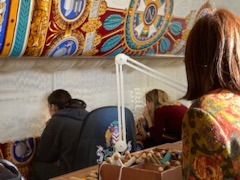

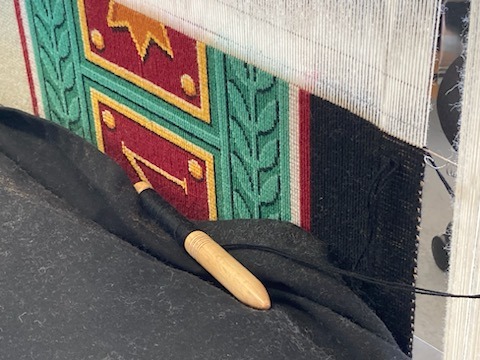

But we did not only see carpets that day. My favourite work under creation was a copy of a beautiful modern art work named 'fleur de lys' or lily of the valley. The fabric that was being woven was to form the base of a banquette(or long seat.) Far too precious in my mind ever to sit on!

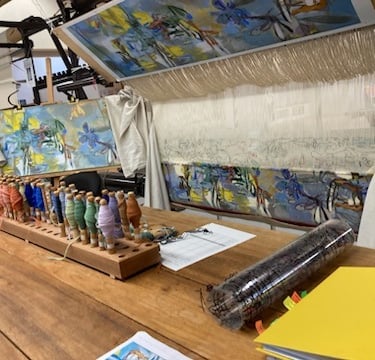
Note the original work of art to the left of the loom; a large copy above, and the palette of wonderful colours. You may also note how part of the design has been drawn onto the trame ( or warp threads. )
So whether you speak perfect French or not, and even if you don't enjoy guided tours, a visit to the Savonnerie is a very special treat. It can be arranged through Lodève tourist office. But let us not forget the earliest women weavers from Algeria that I mentioned in my previous blog, who helped to give birth to this great , world renowned project.
